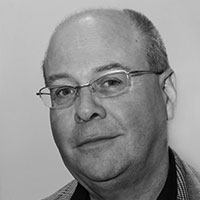
Q: The expectation among industry is that chillers and large air conditioners are set for dramatic technological changes. Do you think this sentiment is accurate and if so, what are the changes you expect to see?
A: When I reflect back over my time in the industry, the changes certainly have been significant, and I would expect this trend to continue in the years to come. Many of these changes have been evolutionary whilst some have been transformational. The use of data, as well as the internet, will continue to shape many aspects of our industry in the future
.
On e notable change is the significant amount of choice that is available to our industry today. Globalisation has brought us products and technologies from all over the world. With efficiency improvement, we will continue to seegreater focus on not just the equipment, but the system in which it operates.
A s technology enablers move product closer to theoretical efficiency limits,focus will continue to transition to optimization at the system level. At present we are embracing the next transition to a new generation of lower GWP refrigerants. This will bring both opportunities and challenges.
Ou r industry will always continue to change and progress. Digital technology has significantly impacted the way that we design, manufacture, and operate products, and necessitates a greater breadth of skills from those who service them. The application of the variable speed drive to HVAC systems has grown exponentially.
Whether it is dramatic change or business as usual, we continue to move forward and embrace opportunities as a dynamic and progressive industry.
Q: What is driving these technological changes? How will these forces influence the design of products to come?
A: Our industry has always been quite progressive at implementing new ideas and new technologies. Within the global economy, Australia today sources best-in-class components and products from every region of the world.
The availability of information on a worldwide scale enables opportunities to be captured with greater speed. Significantly increased market competition, a progressive regulatory landscape and sustainability drivers within real estate portfolios necessitate industry players staying at least one step ahead.
Equipment designs, the working fluids that they use and the manufacturing facilities that produce them are today all significantly more sustainable, while equipment full- and part-load efficiencies continue to set new benchmarks. Energy recovery and free cooling technologies are more frequently being applied.
Rising energy costs impact the choice of technology and system selection. Sustainability rating schemes for both new construction and the built environment continue to stimulate innovation in equipment, system and building design. Equipment MEPS and the NCC continue to raise the bar for improved efficiency and sustainability requirements.
Q: With change comes risk. What do building owners, facility managers and service companies need to consider when making investment decisions for the future?
A: I think the fundamentals will always remain. Brand, reliability, efficiency, local support, and first cost and life-cycle economics will remain as important purchasing criteria
.
Sinc e the 1930s and the introduction of Freon gasses, HVAC systems have selected refrigerants that were stable and non-flammable. Some next-generation gases will bring new challenges with flammability, necessitating possible changes to equipment designs, handling practices, service procedures, and building codes. Our industry is taking this in its stride with significant investment in testing and R&D to ensure their safe and appropriate application.Equipment efficiency standards as well as building minimum compliance requirements can be expected to continue to increase. Our industry associations and their members do a great job communicating with government regulators, as well as taking a proactive role in shaping industry direction.
The key to managing the change for anyone in the industry is to be informed and engaged. Preparing for the future requires risk awareness, market readiness, technical ability, and legislative framework. Whilst the regulatory landscape continues to change, there will always be individual priorities that influence purchasing decisions.
Q: Although the market for this equipment is global, are there any issues in Australia that will have an influence on what is sold here, or how it is used and maintained?
A: Australia is a vast continent with climate zones that have varying daily and seasonal temperature and humidity ranges. It is always important to select appropriate equipment, have it applied correctly, and have it installed, commissioned and maintained per the manufacturer’s recommendations
.
A t one end of the scale, we have products that are quite straightforward that may utilise many generic components and at the otherend we have products that can be quite complex and may utilise many proprietary components. Local knowledge, product and service support, and parts availability are always key considerations. In terms of new equipment and technology, Australia has always been an early adopter. Industry training is paramount for installers,servicers , and users.
Whils t minimum product efficiency regulations around the globe are continuing to increase, they are not all the same, and similarly whilst codes and standards around the globe are regularly updated, they are not all harmonised. For example, refrigerant timelines under the Montreal protocol are different for article 5 and non-article 5 countries.Whilst globalisation brings opportunities to our doorstep, there will also be additional considerations.
